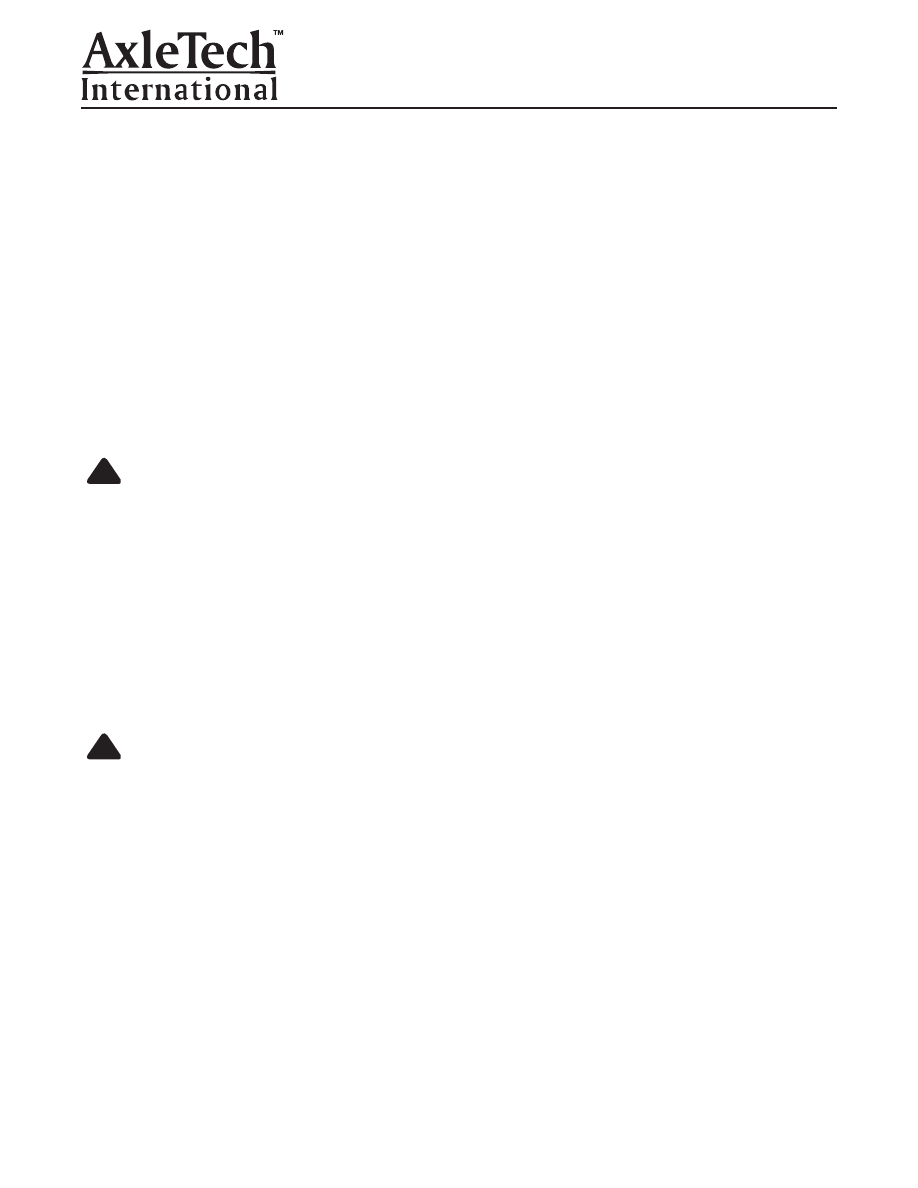Challenger Terra Gator 3244 Chassis. Manual - part 96

Repairing or Replacing Parts
Replace worn or damaged parts of an axle assembly.
The following are some examples to check for repair
and possible replacement:
• Replace any fastener if corners of the head are
worn.
• Replace washers if damaged.
• Replace oil seals or grease seals at the time of axle
repair.
• Clean parts and apply new liquid gasket material
where required when the axle is assembled.
• Remove nicks, marks and burrs from parts having
machined or ground surfaces including axle shaft
splines. Use a fine file, India stone, emery cloth or
crocus cloth for this purpose.
CAUTION
Threads must be without damage and clean so
that accurate adjustment and correct torque
values can be applied to fasteners and parts.
• Clean and repair threads of fasteners and holes.
Use a thread die or tap of the correct size or a fine
file for this purpose.
• Tighten all fasteners to correct torque values.
Removing Dri-Loc Fasteners
If it is difficult to remove fasteners from components,
the strength of Dri-Loc, adhesive or medium and high
strength thread-locking compound can be decreased
by heating. Refer to the following procedure.
CAUTION
Do not exceed 177° C (350° F) maximum. Heating
must be done slowly to prevent thermal stresses
in the other components.
1. Heat the fastener for three to five seconds only.
Try to loosen the fastener with a wrench. Do not
use an impact wrench to loosen the fastener or hit
the fastener with a hammer.
2. Repeat Step 1 until you remove the fastener.
!
!
Preparing Surfaces, Threaded
Holes and Fasteners for Later
Assembly.
1. Clean the oil and dirt from threaded holes. Use a
wire brush.
2. Remove all the old gasket material from both
surfaces.
3. Clean the surfaces where silicone gasket
material will be applied. Remove all the oil,
grease, dirt and moisture without damaging the
mating surfaces.
4. Dry both surfaces.
Flush Lube from the Axle
The entire rigid mount axle housing assembly shares the
same oil. Lubricant contamination of the wheel end or
housing bowl can spread to all areas of the axle. Flush
the lubricant from the entire axle housing before you
assemble the axle.
1. Reminder note that there are (3) magnetic plugs in an
axle assembly , (1) in the carrier bowl bottom and (1)
each in the axle housing flange bottom. These must
be removed and cleaned of any metallic debris before
axle reassembly.
2. The oil fill plug located in back of axle housing bowl is
non-magnetic. This plug can also be removed during
axle cleaning.
3. For axles that have internal wet brake option: there
are (2) wet brake inspection plugs that are located (1)
in each axle housing flange. These plugs are also
non- magnetic.
4. Clean any debris from behind internal flange in
housing bowl area.
5. Verify all contaminants in housing leg areas have
been removed.
Page 23
Section 3
Prepare Parts for Assembly